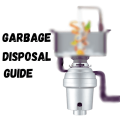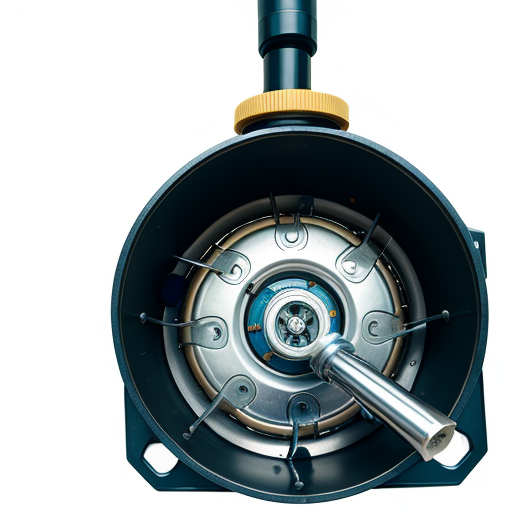We’ve all been there. The satisfying clink of a glass hitting the trash can, only to be followed by a sickening thud as it lands not in the bin, but down the garbage disposal drain. A moment of panic sets in – visions of shattered blades and expensive repairs cloud your mind. Fear not, fellow kitchen warriors! Extracting glass shards from your garbage disposal doesn’t have to be a recipe for disaster.
Why Glass is the Enemy of Garbage Disposal
While garbage disposals are designed to tackle tough food scraps, glass is their kryptonite. Here’s why:
- Hardness Factor: Glass is significantly harder than the metal components within your disposal unit. This means grinding glass can dull or even crack the blades, leading to malfunctioning and potential leaks.
- Shattering Surprise: Glass, by its very nature, shatters easily. These sharp shards can lodge themselves within the disposal unit, posing a safety hazard if you reach in blindly to retrieve them.
- Clog City: Even tiny glass fragments can contribute to clogs within the disposal unit and plumbing system. This can lead to frustrating backups and require additional plumbing work to resolve.
In short, glass and garbage disposals are a recipe for trouble. But before you resign yourself to a disposal replacement, let’s explore some safe and effective methods for removing those unwelcome glass shards.
Safety First: Essential Precautions Before You Begin
Before you embark on your glass shard extraction mission, safety is paramount. Here are some crucial precautions to take before you get started:
- Turn Off the Power: This is the golden rule! Always unplug your garbage disposal or turn off the breaker at your main electrical panel to ensure it’s completely off before attempting any work on it. A stray turn of the switch while your hand is in the disposal could lead to serious injury.
- Clear the Drain Area: Remove any objects, sponges, or cleaning tools from the sink area to create a clean workspace. This will minimize the risk of accidentally knocking something into the disposal or obstructing your access.
- Gather Your Tools: Assemble the tools you’ll need for the extraction process. Depending on the size and location of the glass shards, you might need:
- Flashlight: For better visibility within the disposal unit.
- Long-nosed pliers: For grasping and removing larger glass pieces.
- Shop vacuum (ideally wet/dry): For sucking up smaller glass fragments and debris.
- Hex key (Allen wrench): Specific to your garbage disposal model, this can help dislodge stuck glass if needed. Consult your owner’s manual to see if this method applies to your disposal unit.
- Eye Protection: Wearing safety glasses can help shield your eyes from any flying glass shards that might dislodge during the removal process.
By following these safety precautions, you can minimize the risk of injury and ensure a smooth glass shard extraction process. Remember, safety should never be compromised when dealing with sharp objects and electrical appliances.
Removing Glass Shards: Effective Techniques for Different Scenarios
Now that you’re armed with safety gear and the right tools, let’s tackle those pesky glass shards! The best approach depends on the size and location of the glass pieces. Here are some effective techniques for different scenarios:
1. Retrieving Large Shards with Tongs or Pliers:
- Shine a Light: Use your flashlight to get a clear view of the interior of the disposal unit and locate the larger glass shards.
- Carefully Reach In: Using long-nosed pliers or tongs, carefully reach into the disposal and grasp the large glass pieces. Be slow and deliberate to avoid pushing the shards further down.
- Slowly Extract: Once you have a firm grip on the glass, gently pull it out of the disposal unit. Dispose of the glass shards in a proper glass recycling bin or wrapped securely in a newspaper before placing them in the trash.
2. Using a Shop Vacuum for Smaller Pieces:
- Shop Vac Power: If the glass has shattered into smaller pieces, a shop vacuum can be a lifesaver. Ideally, use a wet/dry shop vacuum that can handle any water or moisture present within the disposal unit.
- Attach the Nozzle: Select a nozzle attachment that fits comfortably within the disposal drain opening.
- Suck Up the Shards: Turn on the shop vacuum and carefully maneuver the nozzle around the disposal unit, sucking up any visible glass fragments and debris.
- Repeat if Necessary: Depending on the amount of glass, you might need to repeat the process a few times to ensure all the shards are removed.
3. The Hex Key Trick: Dislodging Stubborn Glass
- Consult Your Manual: This method might not apply to all garbage disposal models. Refer to your owner’s manual to see if your disposal unit has a hex key socket located on the underside.
- The Hex Key: If your disposal has a hex key socket, locate the appropriate sized hex key (Allen wrench).
- Turning the Mechanism: Carefully insert the hex key into the socket and slowly turn it back and forth. This can help dislodge any glass pieces that might be jammed within the grinding mechanism.
- Vacuum and Repeat: Once you’ve turned the hex key a few times, use the shop vacuum again to suck up any dislodged glass fragments. Repeat the turning and vacuuming process until you’re confident all the glass is removed.
Remember: Never force the hex key if it doesn’t fit snugly. Using the wrong size can damage the disposal unit.
Preventing Future Glass Mishaps: Building a Better Garbage Disposal Routine
Extracting glass shards from your garbage disposal is certainly an adventure, but wouldn’t it be better to avoid the ordeal altogether? Here are some tips to prevent future glass mishaps and keep your disposal functioning happily:
- Double Check Your Trash: Before scraping food waste into the disposal, take a moment to double-check your trash can. Did any glass shards or other non-disposable items accidentally end up in your scraping hand? A quick look can save you a future headache.
- Know Your Disposal’s Limits: Not everything belongs in the garbage disposal. Familiarize yourself with the manufacturer’s recommendations and avoid putting hard or fibrous materials like glass, eggshells, or corn cobs down the drain.
- Embrace the Compost Bin: Consider using a compost bin for certain food scraps like eggshells, fruit pits, and coffee grounds. This not only keeps these items out of your disposal but also creates nutrient-rich compost for your plants!
- The Power of Prevention: Develop a habit of grinding small amounts of food scraps regularly, even if you haven’t prepared a full meal. This helps keep the blades sharp and prevents food particles from accumulating and potentially attracting unwanted pests.
- Run Cold Water: After grinding food scraps, run cold water for about 30 seconds to flush away any leftover debris and keep the disposal unit clean.
By incorporating these preventive measures into your routine, you can significantly reduce the risk of accidentally sending glass shards down the disposal drain. Remember, an ounce of prevention is worth a pound of (glassy) cure!
People Also Ask (PAA) Section:
1. What if I accidentally turn on the disposal with glass stuck inside?
If the disposal turns on with glass stuck inside, turn it off immediately! Do not attempt to reach in blindly or force the disposal to grind. Follow the safety precautions outlined earlier and then unplug the disposal or turn off the breaker before attempting to remove the glass shards using the methods mentioned above.
2. Can I grind down small glass pieces safely?
No, it’s not recommended to grind down even small glass pieces in your garbage disposal. Glass can still damage the blades and potentially cause cracks or dulling. Always err on the side of caution and dispose of glass shards in the trash bin.
3. Should I call a plumber to remove glass from my disposal?
If you’re uncomfortable removing the glass shards yourself, or suspect there might be larger pieces lodged within the unit that you can’t reach, it’s best to call a qualified plumber. They have the expertise and tools to safely remove the glass and ensure your disposal is functioning properly.
4. How can I tell if there’s broken glass in the disposal?
There are a few signs that might indicate broken glass in your disposal:
- Unusual Noises: A grinding or clanging sound coming from the disposal while it’s running could be a sign of glass shards hitting the blades.
- Drainage Issues: If your sink starts to drain slowly after a possible glass mishap, it could be due to glass pieces clogging the disposal unit or pipes.
- Visible Shards: Using a flashlight, you might be able to see some larger glass fragments lodged within the disposal unit.
5. What are some alternatives to glass that are safe for the disposal?
There are many safe alternatives to glass that you can grind in your disposal:
- Food Scraps: Soft food scraps like vegetable peels, fruit cores, eggshells (in small quantities), coffee grounds, and tea leaves are generally safe for grinding.
- Bread Products: Bread crusts and leftover cereal can be ground up in the disposal to help freshen it and keep the blades sharp.
- Cooked Bones (with caution): Some sources recommend grinding small, cooked bones (like chicken or fish) in moderation. However, it’s important to check your disposal’s manual for specific recommendations as some models might not be suitable for grinding bones.
By following these tips and using the safe alternatives mentioned above, you can keep your garbage disposal functioning optimally and prevent future glass-related mishaps!
Conclusion:
Phew! With a little know-how and the right tools, you’ve conquered the challenge of removing glass shards from your garbage disposal. Remember, safety always comes first. By following the outlined precautions and techniques, you can extract those unwelcome glass pieces and restore peace (and a pleasant aroma) to your kitchen.
But why stop there? By incorporating preventive measures into your routine, you can significantly reduce the risk of future glass mishaps. Develop a habit of checking your trash before scraping, know your disposal’s limits, and embrace the power of prevention through regular grinding and flushing.
So, the next time you reach for a glass in the kitchen, remember – a quick glance at the trash can can save you a future headache (and a potential call to the plumber!). With this newfound knowledge, you can enjoy the convenience of your garbage disposal, worry-free and glass-free!

